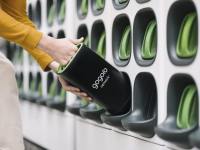A fully autonomous, commercial robo-taxi service with no backup drivers is about to launch in San Francisco, after the California Public Utilities Commission (CPUC) issued its first-ever Driverless Deployment Permit to GM subsidiary Cruise.
The permit marks the first time that self-driving taxis have been allowed to take paying customers without keeping a backup driver on board.
According to CPUC, “Cruise may offer passenger service to the general public in its fleet of 30 all-electric AVs without a safety driver present on select streets in San Francisco at maximum speed of 30 mph, from the hours of 10pm to 6am daily when weather conditions do not include heavy rain, heavy fog, heavy smoke, hail, sleet, or snow. Cruise is authorised to collect fares for these rides but cannot offer shared rides between passengers from different parties at this time.”
The proposal was passed despite a couple of concerns raised in the public consultation process. Disability Rights California complained that the service fails to meet the needs of certain disability groups, since it doesn’t currently provide wheelchair-accessible vehicles or auxiliary aids for hearing-impaired and deafblind people.
The San Francisco Municipal Transportation Agency also expressed concern that Cruise’s autonomous vehicles had occasionally performed passenger pickups and drop-offs without finding a legal place to stop, pulling to a halt in an active travel lane and holding up other traffic – but Cruise pointed out that as commercial vehicles, its cabs are allowed to do so when “reasonably necessary.”
Ultimately, the city believes autonomous electric taxis will make the streets safer and the air cleaner, while protecting passenger safety and improving access to transport, particularly for the disadvantaged. Cruise will begin rolling the service out gradually, and the company expects to expand its fleet and apply for extended capabilities in time.





